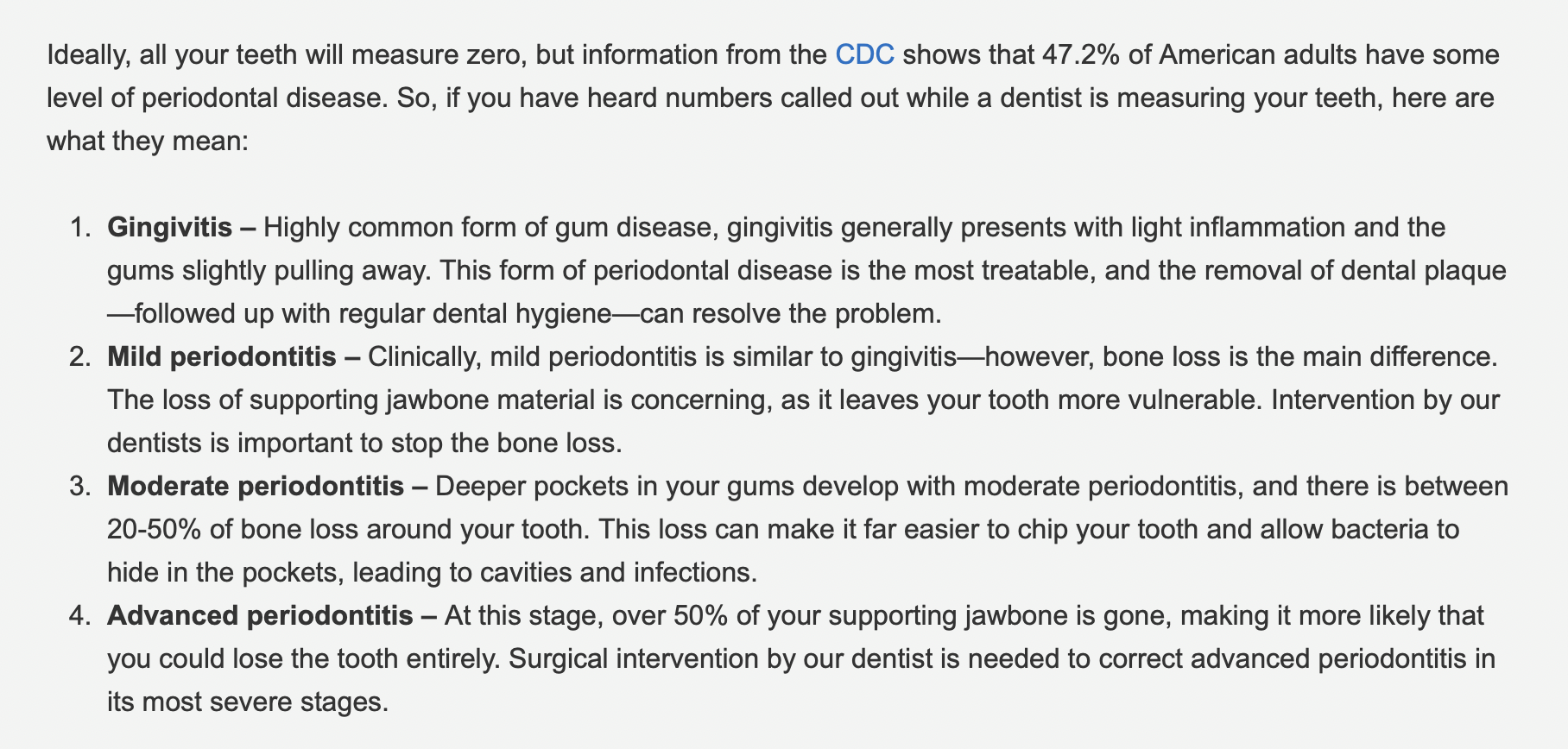Lies on the internet
post by sudo · 2022-08-24T05:14:53.272Z · LW · GW · 4 commentsContents
4 comments
After a visit to the dentist, you go home and search up "numbers read off during dental exam."
What were they measuring? You think.
A website that looks like a legitimate dental company tells you these numbers are measurements of gum disease.

When I saw this, alarm bells went off. First of all, I'm sure that the numbers corresponded to something empirical. The idea of a dentist going through my teeth and marking each one "gingivitis, mild periodontitis, moderate periodontitis, advanced periodontitis" seems absolutely absurd. Secondly, the website certainly seemed like it was trying to sell me something. Get treated at our clinic!
However, I was still not quite ready to dismiss the article. Surely, a credible-looking website from a credible-looking dental institution can't be publishing complete junk!
I looked at some other websites of other credible-looking dental institutions, many of whom directly contracted this article, saying that 1-3 are normal (and that they are mm measurements of distances between your gum and your teeth).
The webpage that made the most sense to me was this one. It included some nice diagrams. But even this page seemed less than impartial! It was yet another dentist's office.
Why is it so hard to find good dental information on the internet?
Edit: It turns out that the numbers are not measurements of distances between your gum and your teeth, but rather the depth of the pockets between your gum and your teeth. Neat. 
4 comments
Comments sorted by top scores.
comment by Zian · 2022-08-24T05:21:24.034Z · LW(p) · GW(p)
A 2010 journal article found that if you ask 3 different people to measure the probed pocket depth, they will agree exactly about 55% of the time and they'll be within 1mm of each other 97% of the time.
There are also other symptoms to look for besides depth before a diagnosis should be given (e.g. bleeding and bone loss).
The American Academy of Periodontology published 2 tables that walk the user through staging and grading periodontitis. The tables include the following factors:
- Amount of bone loss visible when looking at the tooth directly
- Amount of bone loss visible from looking at an x-ray
- Number of teeth with bone loss
- The type of bone loss
- Maximum probing depth
- Whether there's a pattern to the affected teeth (are they all next to each other?)
- Amount of biofilm/plaque
- Smoking: Yes or no
- Diabetes: Yes (and if yes, how well-controlled is it) or no
comment by Dagon · 2022-08-24T15:56:27.319Z · LW(p) · GW(p)
Why would you look on the internet rather than just asking your dentist (and then looking on the internet, so you can get a better dentist if they're confused or lying)? the "mm of pocket depth" matches what my hygienist told me long ago, and she also explained that they check it periodically because the number itself isn't that useful - they're looking for changes and combination with other evidence (gum bleeding, appearance, etc.).